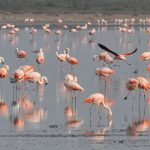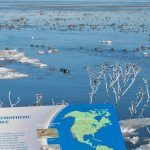The Beni Savanna of Bolivia is a critically endangered habitat that exists nowhere else. Three major rivers flow through this endemic ecosystem from the eastern slope of the Andes, combining with heavy summer rainfall to flood these lowlands for eight months of every year. Dotted with forested islands, marsh wetlands, gallery forests and grasslands, the Beni Savanna is threatened by poorly managed cattle ranching. Overgrazing, overstocking, annual burning, logging, and the planting of African grasses has severely altered this landscape – but there is one place where this ecosystem is being restored and protected.
The Barba Azul Nature Reserve is the only WHSRN site in Bolivia. “Barba Azul” means “blue beard,” the local name for the Critically Endangered Blue-throated Macaw (Ara glaucogularis). In 2008, Asociación Armonía established the Reserve as the world’s first protected area to bring this parrot species back from the brink of extinction. In the process, the Reserve also safeguarded the most important migration stop-over site known to date in all of Bolivia for the Buff-breasted Sandpiper (Calidris subruficollis). Much less boisterous and boldly-colored than a barba azul, “buffies” have a charisma of their own – and rely on this landscape as they make their way from breeding grounds in the Arctic to the pampas of Argentina to spend the boreal winter. In 2015, the Barba Azul Nature Reserve was designated as a WHSRN Site of Regional Importance for supporting more than 1% of the biogeographic population of this near-threatened shorebird species.
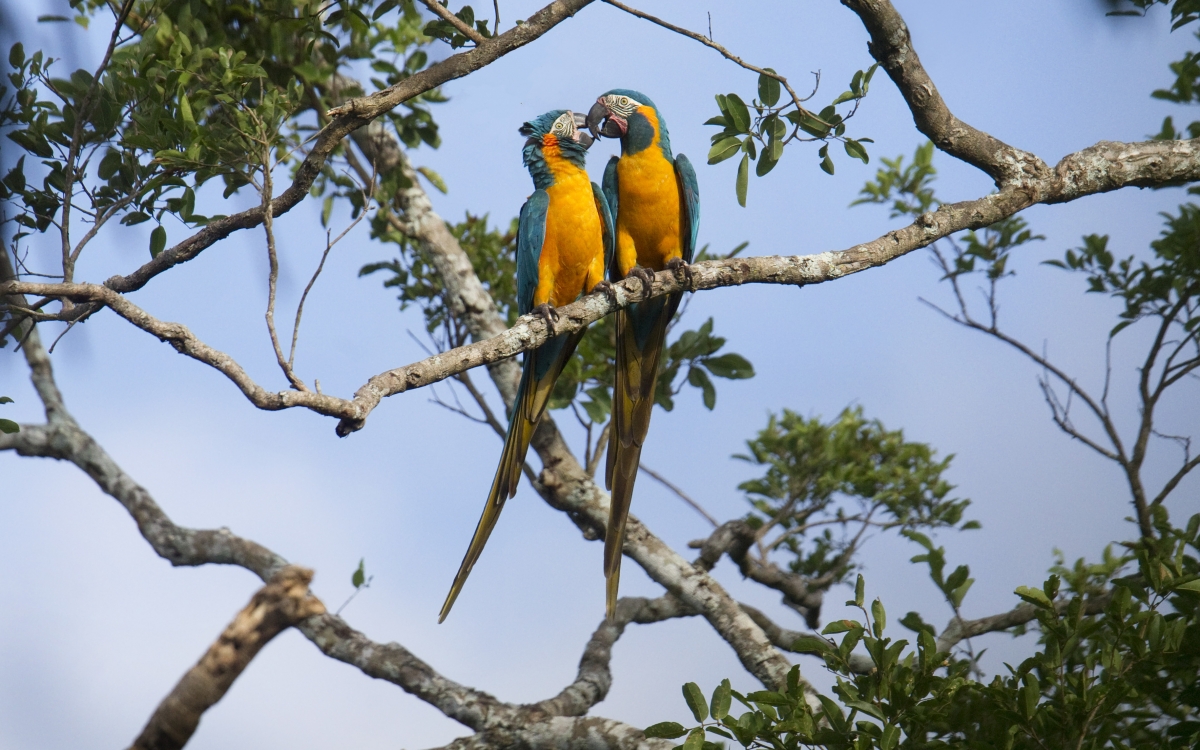
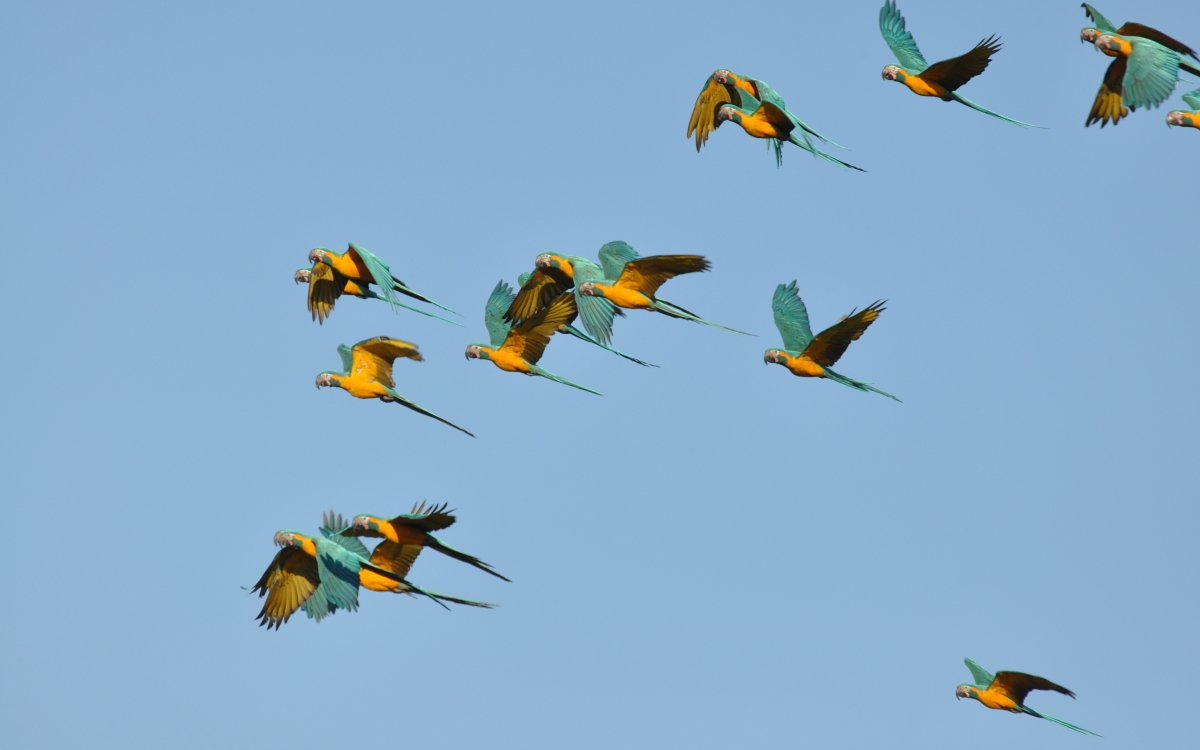
Left: A Blue-throated Macaw pair ready for breeding. Photo: Daniel Alarcon. Right: A flock of Blue-throated Macaws at Barba Azul. Photo: Sebastian Herzog.
Besides its wealth of threatened wildlife species, Barba Azul is unique for another reason, says the Reserve’s Conservation Program Director Tjalle Boorsma. “We are working to make a reserve in the middle of nowhere financially self-sufficient.”
Asociación Armonía has actively engaged with private landowners and stewards of public land since the founding of the Reserve – promoting alternative land-use practices that maintain the Buff-breasted Sandpiper’s preferred river edge short-grass habitat. Cattle – when managed carefully – can be the key to keeping the grass at the preferred height for buffies, and can provide enough income to support the costs of managing the Reserve.
Boorsma and the team at Barba Azul are working to develop best practices for an alternative, eco-friendly ranching system. With guidance from the Alianza del Pastizal (the Southern Cone Grasslands Alliance), the Reserve is looking to learn what factors influence the presence of Buff-breasted Sandpipers at potential stop-over sites. Through experimental plots to measure the effects of mowing, burning, grazing, and cattle presence on buffie foraging habitat, Barba Azul is gathering data to inform improved management actions to protect this species.
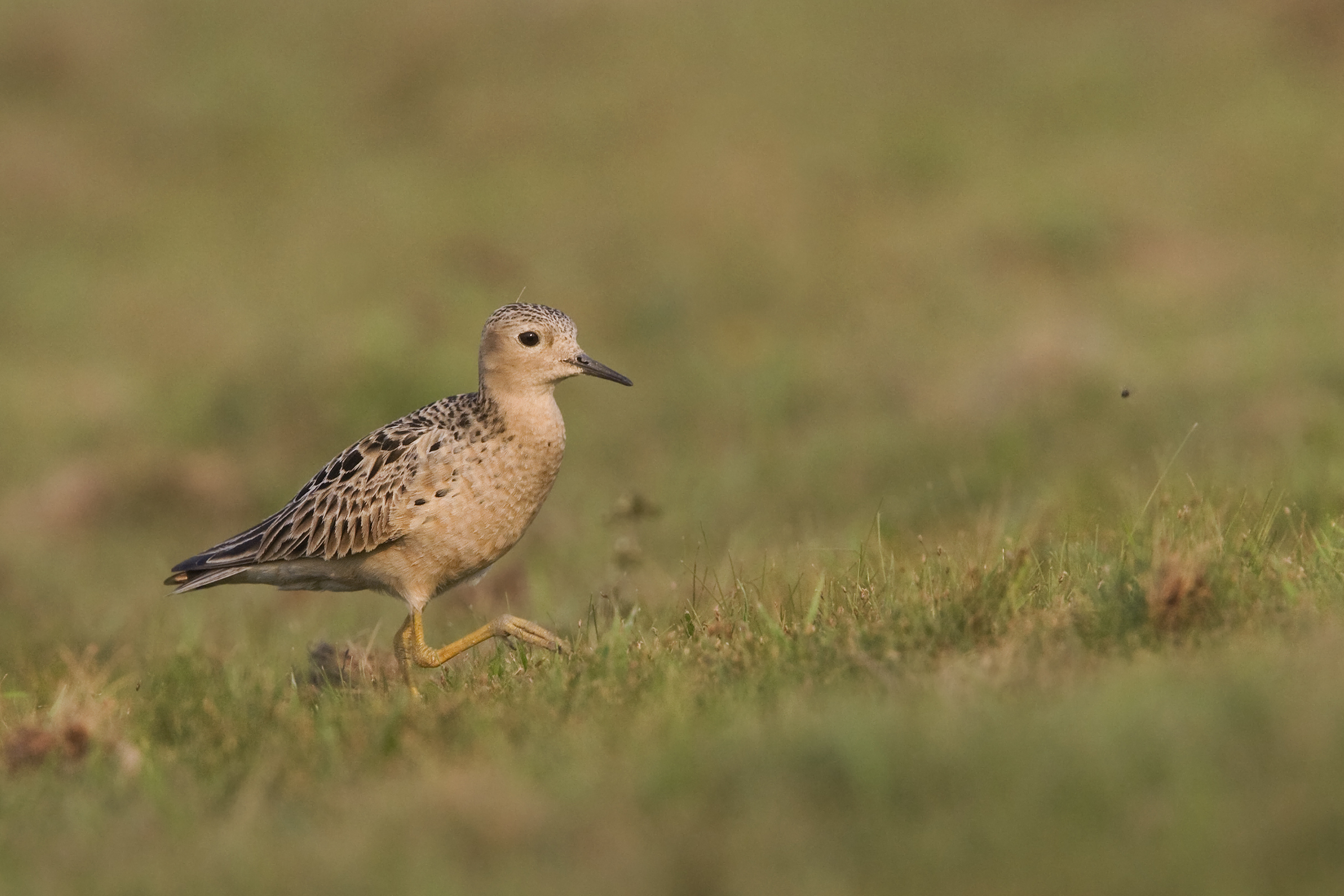
A Buff-breasted Sandpiper at Barba Azul Nature Reserve in Bolivia. Photo: Daniel Alarcon
Thanks to funding support from the Neotropical Migratory Bird Conservation Act, Barba Azul has been monitoring Buff-breasted Sandpipers during fall migration every year since 2012. The survey protocol begins at the end of August and continues through the end of September, with the first two weeks of September bringing the highest concentration of buffies. A partnership with a university in nearby Cochabamba has provided a reliable flow of students to help conduct this research.
In 2016, 1,450 Buff-breasted Sandpipers were counted along the edge of the Río Tiniji, one of the rivers that begins in the Barba Azul Nature Reserve. This was the highest count of Buff-breasted Sandpipers ever documented at a migratory stop-over site in South America, and as of 2017 this plot has been added to the Reserve’s regular monitoring protocol.
Boorsma hopes to deepen the data collection by also documenting each plot’s distance from forest, grass height, presence of cattle, and number of dung piles, among other factors, to understand what influences the ideal foraging habitat for the Buff-breasted Sandpiper. He also hopes to expand surveys to the higher elevated savanna habitat within the Reserve, where high-counts of 200-350 Upland Sandpipers (Bartramia longicauda) have been observed.
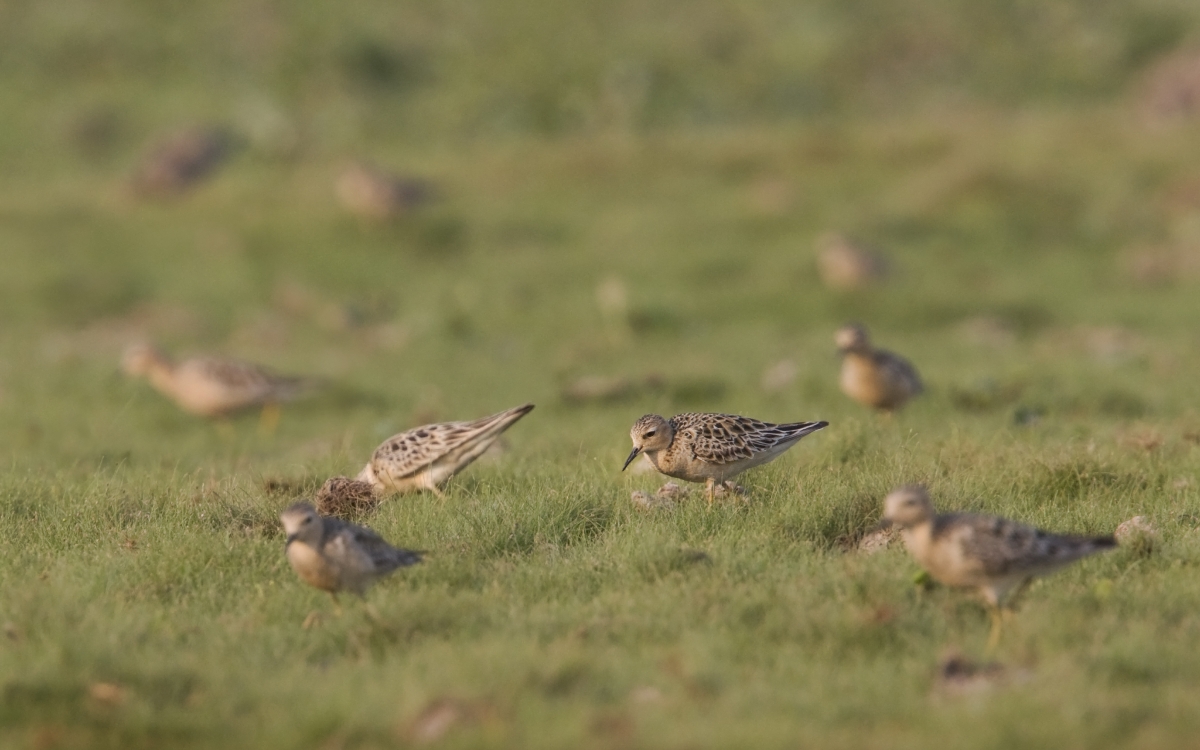
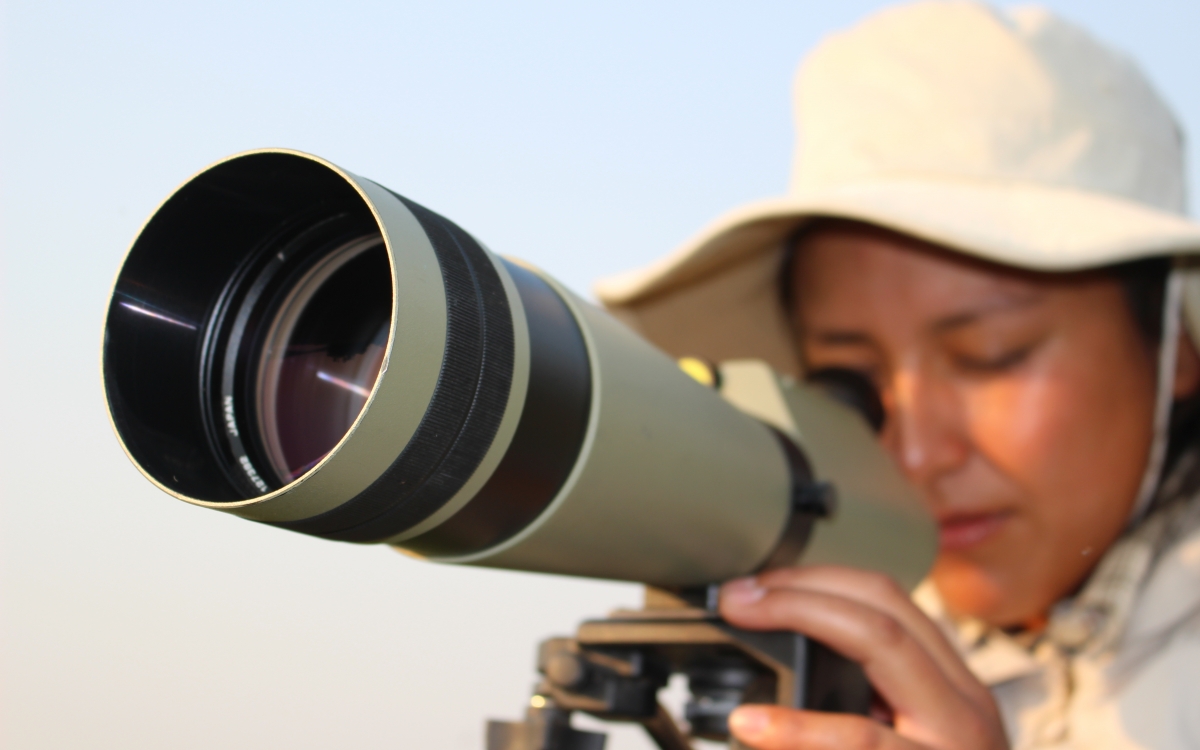
Monitoring Buff-breasted Sandpipers at Barba Azul. Photos: Daniel Alarcon (left) and Tjalle Boorsma (right).
On August 20th, 2018, Asociación Armonía announced the purchase of a new reserve, 210 kilometers south of Barba Azul. The new reserve protects the most important breeding area for the southern sub-population of Blue-throated Macaws, and also opens an opportunity for Boorsma to reach his goal of a cattle ranching scheme that supports the conservation of Buff-breasted Sandpipers. Of the 11,000 hectares that make up Barba Azul, 6,000 are being kept cattle and fire free to protect several of the Reserve’s other threatened species. But the remaining 5,000 hectares, called Barba Azul East, will be dedicated to breeding and rearing the Reserve’s own cattle herd, with the plan to transport the cows to the new reserve to fatten up before being sold. Boorsma will be able to experiment with different stocking rates and grazing rotations to learn how best to combine cattle ranching with the conservation of crucial short-grass habitat. The goal, he says, is that “70 to 75% of the Reserve’s operational costs will eventually come from cattle.”
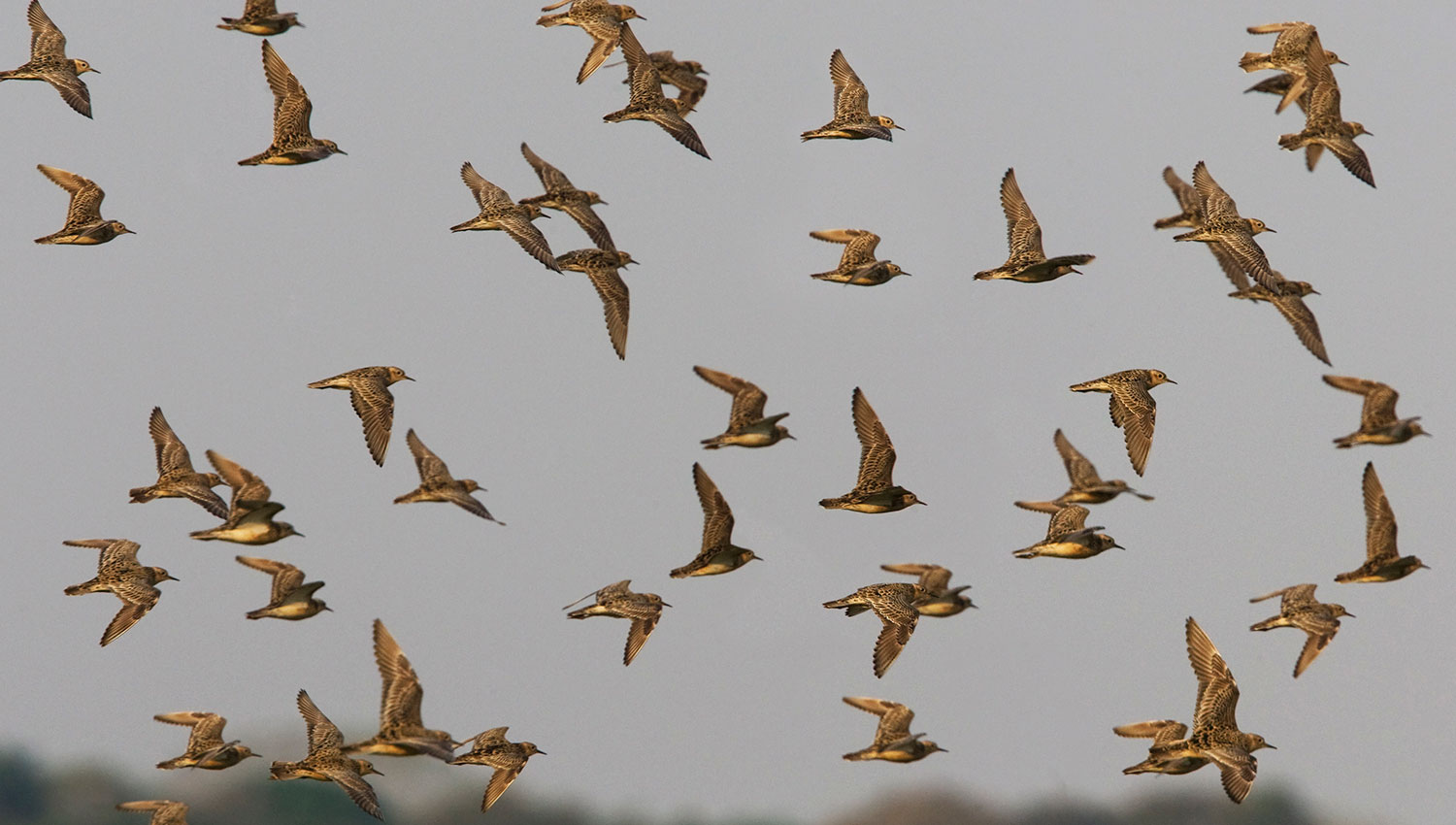
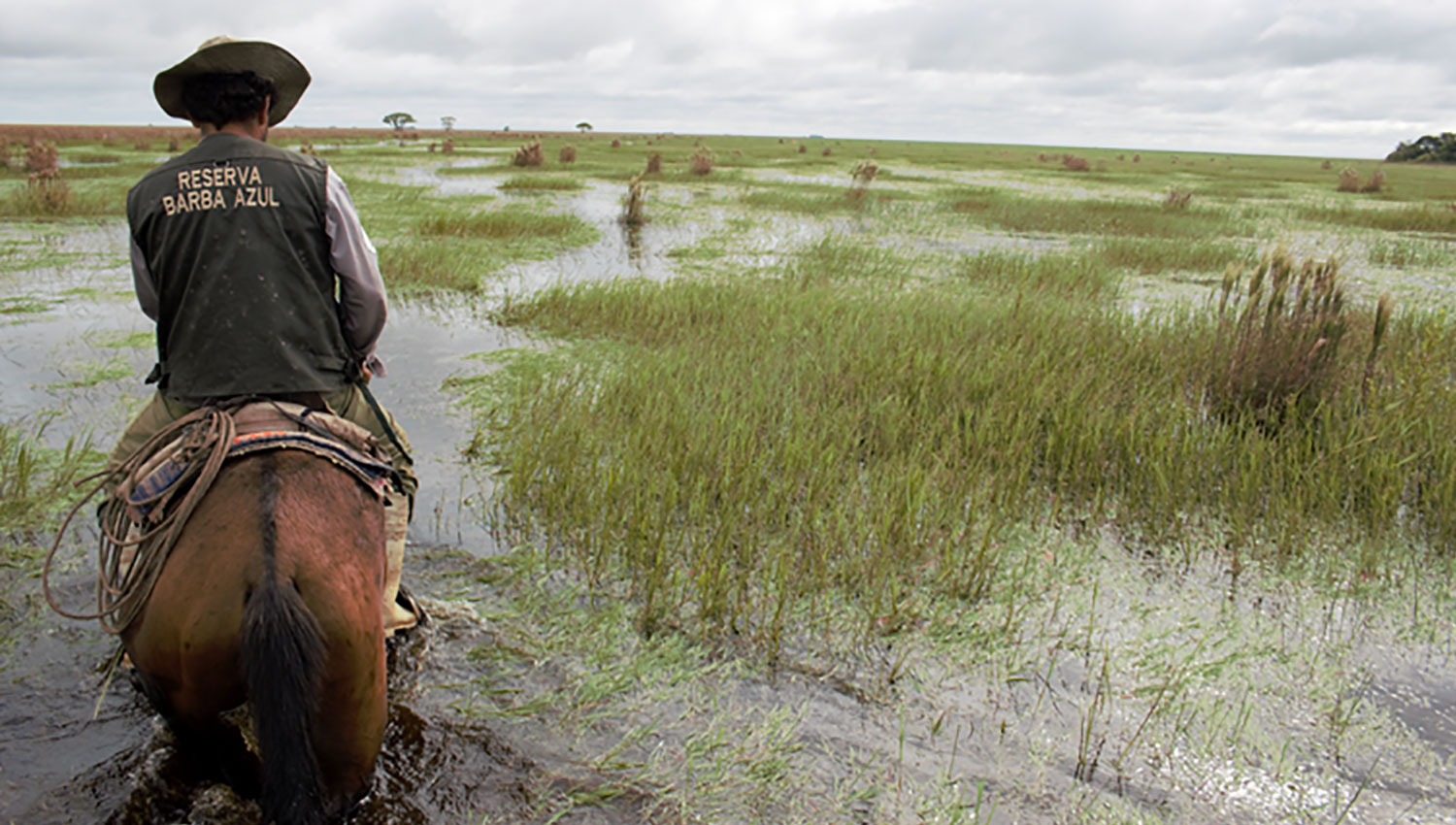
Left: A flock of Buff-breasted Sandpipers flies over river-edge short grass habitat in the Barba Azul Nature Reserve. Photo: Daniel Alarcon. Right: Barba Azul East ranger in flooded savanna habitat. Photo: Tjalle Boorsma.
For more information, please contact Tjalle Boorsma, Conservation Program Director supervising the Barba Azul Nature Reserve, at tboorsma@armonia-bo.org.





